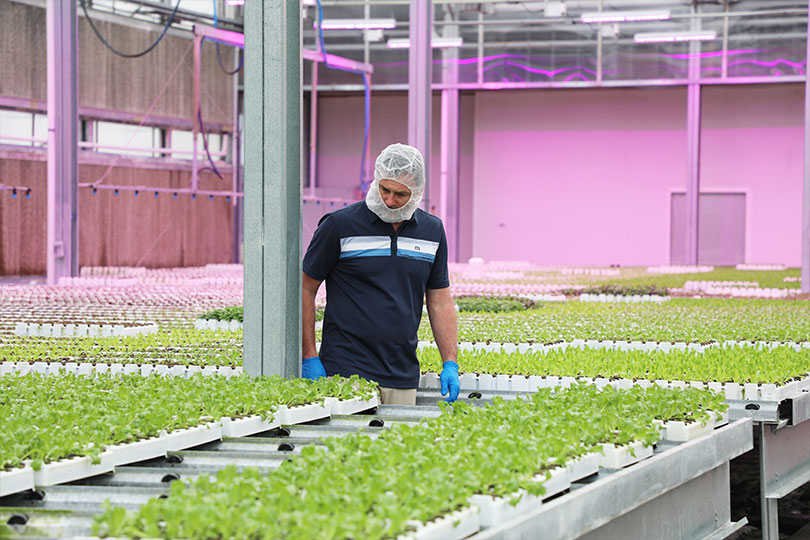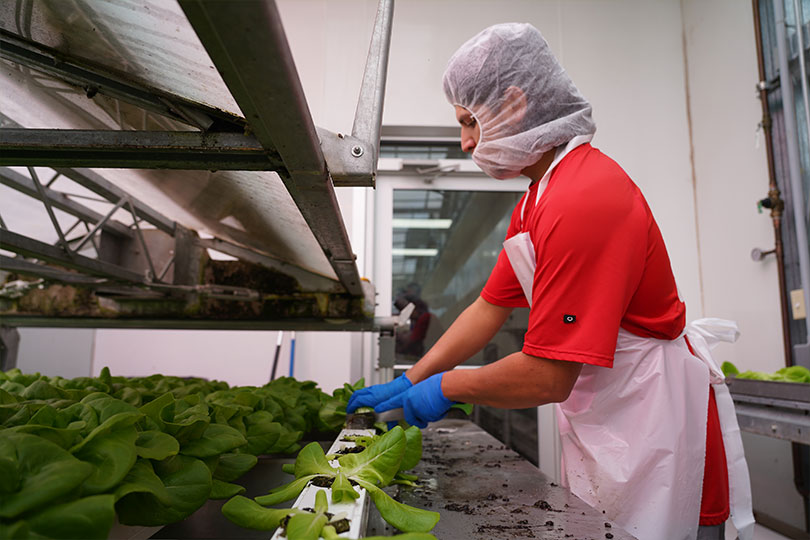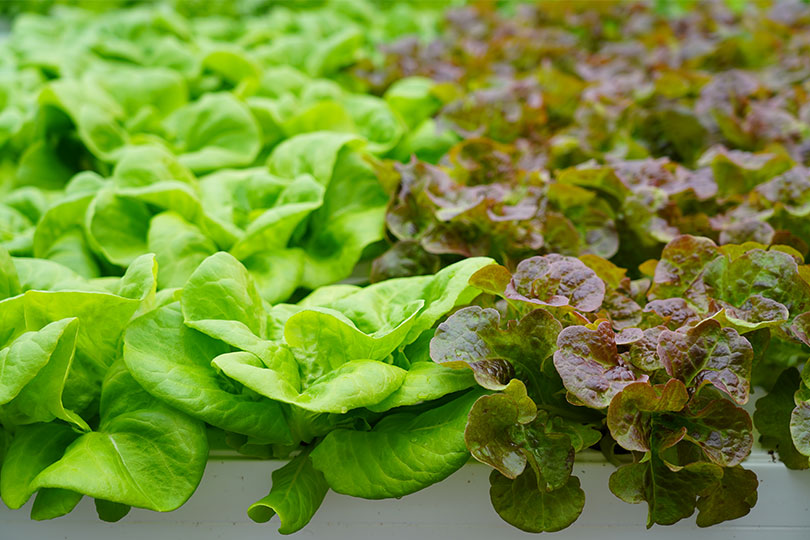By Julie Tomascik
Editor
Rows and rows of leafy greens, of all sizes and select varieties, span across the greenhouses of TrueHarvest Farms in Belton.
It’s where managing partners Jason Maks and Marshall McDaniel planted the roots for their hydroponic farm. They grow, harvest and package lettuce to sell to restaurants, schools and grocery stores.
“At TrueHarvest Farms, we are an indoor ag facility that uses hydroponics, or uses water, basically to provide nutrients to the plants along with water,” Maks said.
They grow four varieties of lettuce—a romaine, a butterhead, a red oak leaf and a crispy leaf.
“In an indoor grow facility, we have the ability to manipulate the environment. We have the opportunity to use less water than we would use outside,” Maks said.
They can also grow 365 days a year.
“We don’t truly have a season,” Maks said. “We do have some seasonality in terms of how things can grow and how long it takes to grow. But ultimately, we’re able to grow from January to December every year.”
In the summer, they can grow lettuce in about 35 days, and it takes up to 60 days in the winter, depending on how much light accumulation takes place.
In the 50,000 square-foot facility, much of the process is automated to minimize opportunities for contamination and maintain optimal water vapor retention for freshness.

Jason Maks walks through the greenhouse inspecting the lettuce growing hydroponically. He and his business partner, Marshall McDaniel, established the hydroponics farm in 2017.
Instead of growing in soil, this farm plants it’s seeds and irrigates a nutritious solution into peat, an accumulation of partially decayed vegetation or organic matter to set the seeds for germination and growth. The peat, which comes from Eastern Europe, provides a functional substrate for roots to grow and feed the plant.
TrueHarvest Farms also makes its own biodegradable pots to cut down on plastic use.
“We’ll plant the seed. We’ll give it some water either through a boom irrigation system or through a pressurized drip system,” Maks said. “At that point, we’ll apply beneficial insects to it, so we don’t use pesticides here at TrueHarvest Farms. We take the opportunity instead to use beneficial insects, or the good bugs to fight the bad bugs.”
Then, the seed germinates, and it’s moved to the greenhouse to for the propagation process.
“Once we get the pot with the seed and now the beneficial insects on it, we take it into germination. We’ll stay in germination a couple of days, let the seed coat crack,” he said. “Then, we move it into the greenhouse where it goes through a nursery/propagation process.”
At this point, they water overhead through a boom sprayer before moving the more mature plant once it has root development onto the gutter line.
At the gutter line, the plant is watered underneath through the root system with a nutrient film.
But indoor farming does come with challenges, namely temperature and humidity. TrueHarvest Farms, however, uses computer monitoring systems to help control those factors.
“We use a cloud-based system that allows us to monitor data 24/7 through our phones so that we know what’s going on, particularly with the plant,” Maks said. “We measure temperature, humidity, vapor pressure deficit. We’ll measure air speed. We’ll measure moisture content in a pod, among other variables.”
Ensuring the facility is properly maintained and that technology is working is essential to keep the farm running.
“I will say that the maintenance function in an indoor grow facility is the most critical function because if the equipment’s not working, nobody’s growing, nobody’s shipping product at the end of the day,” he said.
Maks and McDaniel established the hydroponic farm in 2017, began building in 2018 and steadily ramped up production since then.
And the central location of Belton helps them have a large market to sell to.
“We have San Antonio to the south. We have Dallas/Fort Worth to the north, and then we have Houston to the southeast with Austin really kind of tucked in the middle of all those,” he said. “There’s 20 million people in this Texas triangle, and it gave us a great opportunity to build a farm to this scale and be able to service those markets.”
Neither Maks nor McDaniel have a background in agriculture. But they did extensive research, toured multiple farms, worked with Controlled Environment Agriculture programs at colleges across the country and traveled across Europe to learn more.
“Indoor farming is continuing to grow in the U.S.,” he said. “I do believe indoor farming and outdoor farming both have their places. Ultimately, you can’t have one without the other. There’s certainly an opportunity to learn from one another. I don’t look at us as competitors as much as I look at there’s an opportunity for us all to be able to supply the world with safe, healthy food.”
They broke ground this spring on an expansion that will grow the farm five times its current size.
“Now that we have the relationships we do in the field with the great customers that we have, it gives us an opportunity to expand,” Maks said.
Growing lettuce and growing relationships—that’s the root of TrueHarvest Farms’ business plan and future growth.
Watch a video from TrueHarvest Farms.

Employees harvest lettuce by hand and prepare it for packaging. TrueHarvest Farms sells to restaurants, schools and grocery stores.

